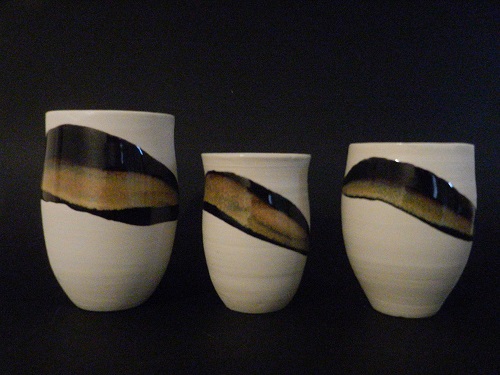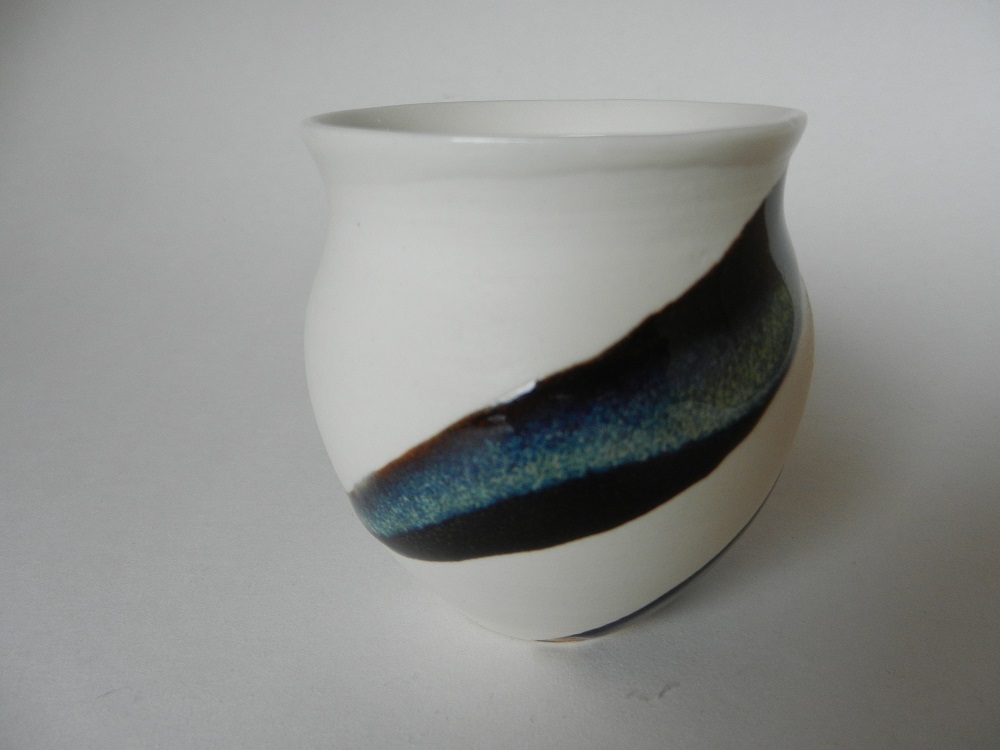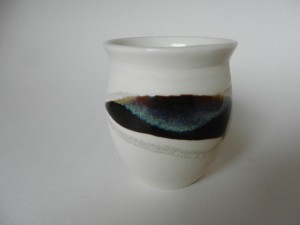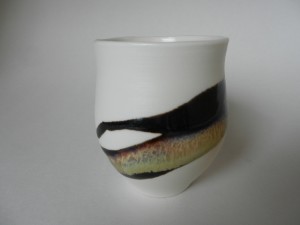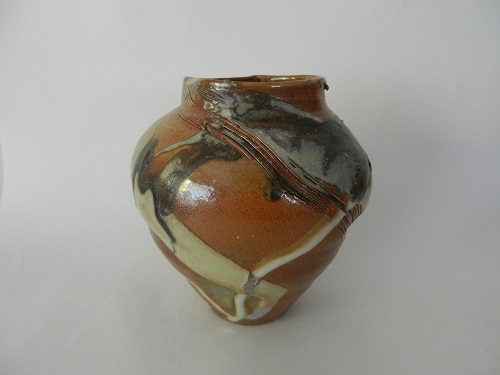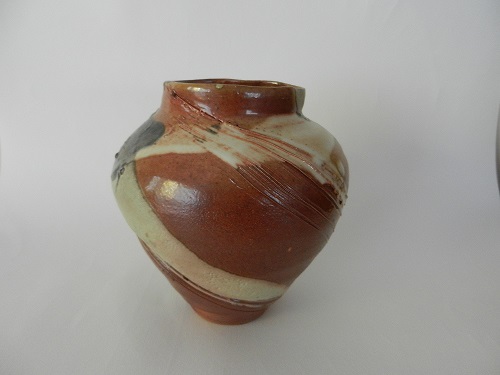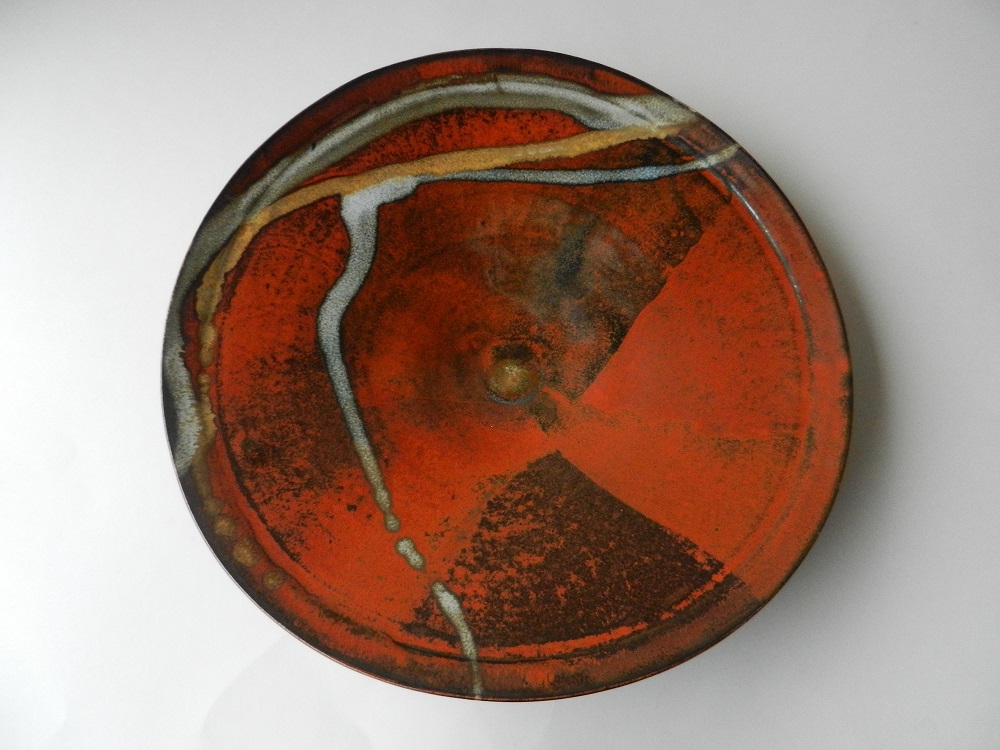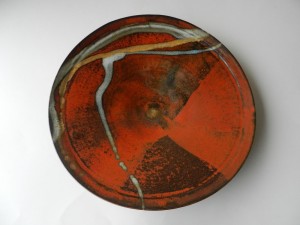A quick, thick squirt of tenmoku; then, after heating the piece with a hair dryer to avoid having the second glaze run more than it should, I squirt a narrow band of a somewhat crystalline, titanium oxide white glaze (which, when fired, turns gold over the tenmoku), trying to keep it within the first splash of colour. Then I glaze the inside with transparent, also covering the top outside edge of the rim, making it easy on the lip. Finally, I take the spray gun to coat the outside with the finest layer of the same transparent, still leaving the surface matte, but giving it some protection against furutre stains. Porcelain; fired in oxidation, to 1260°C.
